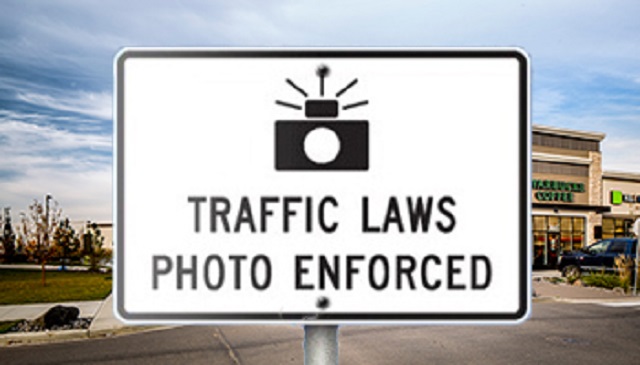Alberta
New Photo Radar rules will move radar sites from freeways to school zones

Protecting drivers from photo radar fishing holes
Alberta is changing photo radar rules to ensure the focus is on traffic safety, not revenue generation.
Many Albertans have expressed growing frustration with the purpose and use of photo radar. To respond to these concerns, Alberta’s government implemented a pause on new photo radar equipment and locations on Dec. 1, 2019.
After receiving data from across the province, Alberta’s government is taking the first step of banning photo radar on ring roads in Calgary and Edmonton starting Dec. 1. At the same time, Alberta’s government will be engaging with municipalities and law enforcement over the next year on removing all “fishing hole” locations across the province. Albertans can be confident that going forward, photo radar will only be used to improve traffic safety.
“Alberta has the highest usage of photo radar in Canada, and these changes will finally eliminate the cash cow that affects so many Albertans. Photo radar must only be used to improve traffic safety, and with theses changes, municipalities will no longer be able to issue thousands of speeding tickets simply to generate revenue.”
The cap on any new photo radar equipment, programs or new photo radar locations will be extended until the one-year consultation with municipalities is complete on Dec. 1, 2024. Edmonton and Calgary will have the option to redeploy the photo radar units previously used on the ring roads to areas in their cities where they have a safety impact – in school, playground and construction zones.
“I am very pleased to see this change to allow our police force to redeploy photo radar from Stoney Trail into high-risk areas in our communities such as school zones, construction zones and playground zones due to changing traffic patterns. This will result in increased traffic safety for all Calgary drivers and pedestrians.”
“Photo radar is about keeping people safe, not money. It is one tool the City of Edmonton uses to protect people on the roads. We will continue to engage with the Government of Alberta and law enforcement to ensure we are achieving the intended outcome of making our roads safer.”
Alberta’s first photo radar units were introduced in 1987 and now there are about 2,387 photo radar sites across the province. Calgary’s ring road has eight photo radar sites and Edmonton’s ring road has 22. These ring road photo radar sites can be relocated to sensitive areas. This means that Calgary can select eight high-risk areas and Edmonton can select 22 high-risk areas to redeploy these sites.
“I am pleased to see this change will focus on using Automated Traffic Enforcement as a tool in the toolbox to improve traffic safety and driver behaviour, as we have done in Spruce Grove. We look forward to the upcoming consultation on this topic.”
“I am happy to see this important change to ensure that photo radar is focused on driver safety rather than revenue generation. This one-year consultation with municipalities will support Albertans by clearly identifying where the need for traffic safety improvements are most necessary in our communities.”
Quick facts
- Photo radar generated $171 million in 2022-2023.
- Traffic fine revenue is split between the province and municipalities, with the province receiving 40 per cent and municipalities receiving 60 per cent.
Related information
Alberta
Red Deer Justice Centre Grand Opening: Building access to justice for Albertans

The new Red Deer Justice Centre will help Albertans resolve their legal matters faster.
Albertans deserve to have access to a fair, accessible and transparent justice system. Modernizing Alberta’s courthouse infrastructure will help make sure Alberta’s justice system runs efficiently and meets the needs of the province’s growing population.
Alberta’s government has invested $191 million to build the new Red Deer Justice Centre, increasing the number of courtrooms from eight to 12, allowing more cases to be heard at one time.
“Modern, accessible courthouses and streamlined services not only strengthen our justice
system – they build safer, stronger communities across the province. Investing in the new Red Deer Justice Centre is vital to helping our justice system operate more efficiently, and will give people in Red Deer and across central Alberta better access to justice.”

Government of Alberta and Judiciary representatives with special guests at the Red Deer Justice Centre plaque unveiling event April 22, 2025.
On March 3, all court services in Red Deer began operating out of the new justice centre. The new justice centre has 12 courtrooms fully built and equipped with video-conference equipment to allow witnesses to attend remotely if they cannot travel, and vulnerable witnesses to testify from outside the courtroom.
The new justice centre also has spaces for people taking alternative approaches to the traditional courtroom trial process, with the three new suites for judicial dispute resolution services, a specific suite for other dispute resolution services, such as family mediation and civil mediation, and a new Indigenous courtroom with dedicated venting for smudging purposes.
“We are very excited about this new courthouse for central Alberta. Investing in the places where people seek justice shows respect for the rights of all Albertans. The Red Deer Justice Centre fills a significant infrastructure need for this rapidly growing part of the province. It is also an important symbol of the rule of law, meaning that none of us are above the law, and there is an independent judiciary to decide disputes. This is essential for a healthy functioning democracy.”
“Public safety and access to justice go hand in hand. With this investment in the new Red Deer Justice Centre, Alberta’s government is ensuring that communities are safer, legal matters are resolved more efficiently and all Albertans get the support they need.”
“This state-of-the-art facility will serve the people of Red Deer and surrounding communities for generations. Our team at Infrastructure is incredibly proud of the work done to plan, design and build this project. I want to thank everyone, at all levels, who helped make this project a reality.”
Budget 2025 is meeting the challenge faced by Alberta with continued investments in education and health, lower taxes for families and a focus on the economy.

Quick facts
- The new Red Deer Justice Centre is 312,000 sq ft (29,000 m2). (The old courthouse is 98,780 sq ft (9,177 m2)).
- The approved project funding for the Red Deer Justice Centre is about $191 million.
Alberta
Made in Alberta! Province makes it easier to support local products with Buy Local program

Show your Alberta side. Buy Local. |
When the going gets tough, Albertans stick together. That’s why Alberta’s government is launching a new campaign to benefit hard-working Albertans.
Global uncertainty is threatening the livelihoods of hard-working Alberta farmers, ranchers, processors and their families. The ‘Buy Local’ campaign, recently launched by Alberta’s government, encourages consumers to eat, drink and buy local to show our unified support for the province’s agriculture and food industry.
The government’s ‘Buy Local’ campaign encourages consumers to buy products from Alberta’s hard-working farmers, ranchers and food processors that produce safe, nutritious food for Albertans, Canadians and the world.
“It’s time to let these hard-working Albertans know we have their back. Now, more than ever, we need to shop local and buy made-in-Alberta products. The next time you are grocery shopping or go out for dinner or a drink with your friends or family, support local to demonstrate your Alberta pride. We are pleased tariffs don’t impact the ag industry right now and will keep advocating for our ag industry.”
Alberta’s government supports consumer choice. We are providing tools to help folks easily identify Alberta- and Canadian-made foods and products. Choosing local products keeps Albertans’ hard-earned dollars in our province. Whether it is farm-fresh vegetables, potatoes, honey, craft beer, frozen food or our world-renowned beef, Alberta has an abundance of fresh foods produced right on our doorstep.
Quick facts
- This summer, Albertans can support local at more than 150 farmers’ markets across the province and meet the folks who make, bake and grow our food.
- In March 2023, the Alberta government launched the ‘Made in Alberta’ voluntary food and beverage labelling program to support local agriculture and food sectors.
- Through direct connections with processors, the program has created the momentum to continue expanding consumer awareness about the ‘Made in Alberta’ label to help shoppers quickly identify foods and beverages produced in our province.
- Made in Alberta product catalogue website
Related information
-

 Business2 days ago
Business2 days agoIs Government Inflation Reporting Accurate?
-

 2025 Federal Election2 days ago
2025 Federal Election2 days agoCarney’s Hidden Climate Finance Agenda
-

 2025 Federal Election2 days ago
2025 Federal Election2 days agoWhen it comes to pipelines, Carney’s words flow both ways
-

 2025 Federal Election2 days ago
2025 Federal Election2 days agoStudy links B.C.’s drug policies to more overdoses, but researchers urge caution
-

 2025 Federal Election2 days ago
2025 Federal Election2 days agoPolls say Canadians will give Trump what he wants, a Carney victory.
-

 2025 Federal Election1 day ago
2025 Federal Election1 day agoCarney Liberals pledge to follow ‘gender-based goals analysis’ in all government policy
-

 2025 Federal Election1 day ago
2025 Federal Election1 day agoPoilievre’s Conservatives promise to repeal policy allowing male criminals in female jails
-

 2025 Federal Election1 day ago
2025 Federal Election1 day agoTrump Has Driven Canadians Crazy. This Is How Crazy.





